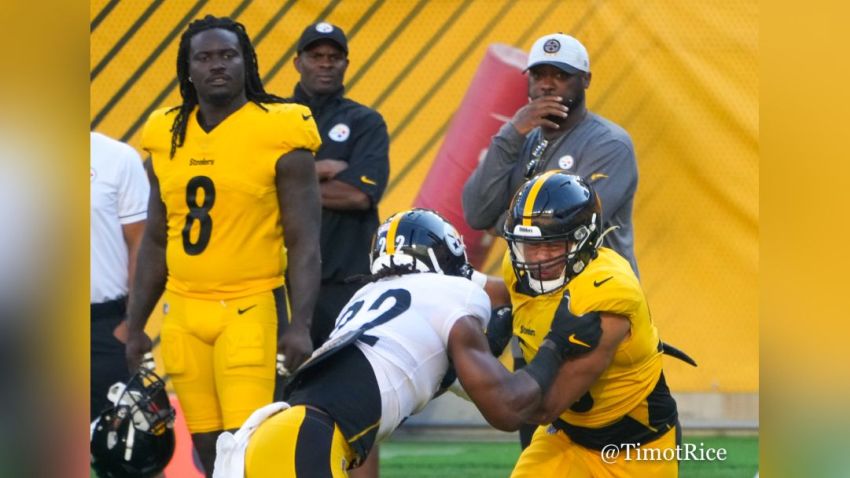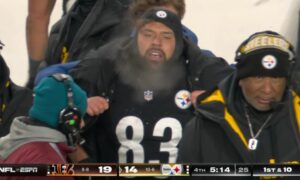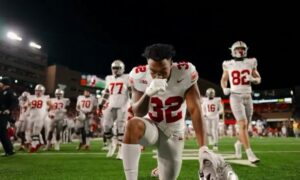Najee Harris was the epitome of a workhorse running back in 2021 for the Steelers. His 381 touches on offense during the regular season led all players at the position. Harris also had the distinction of the highest number of snaps as a pass blocker as a RB, as well.
Harris logged 128 total pass blocking snaps – the highest for a RB since Justin Forsett of the Baltimore Ravens tallied 129 during the 2014 regular season. What’s also noteworthy for Harris is he’s the first rookie to lead the league since T.J. Yeldon also did so with the Jacksonville Jaguars in 2015.
The other remarkable part of Harris’ pass blocking abilities last season was he allowed just one sack and nine total pressures. His allowed pressure rate of 7.0% was second-lowest among rookie RB’s to log 10 more pass blocking snaps – Khalil Herbert of the Bears had a 5.3% pressure rate on 38 such snaps. No other rookie managed to meet half the total number of snaps as a pass blocker either. Chuba Hubbard of Carolina logged 56 snaps allowing one sack. Michael Carter of the Jets 52 snaps and three sacks. Javonte Williams of Denver 49 snaps with three sacks allowed. Simply put, rookie running backs last season weren’t asked or perhaps trusted to do what Harris accomplished as a pass protector.
Why so many opportunities? The short answer is Harris does well and therefore earned trust in getting the job done. In looking at just the career numbers for the Steelers RB’s rostered last year, Harris accumulated more pass blocking snaps already in just one season.
Harris far and away has the lowest career pressure rate allowed among current Steelers running backs, outside of McFarland, who has only been tasked with two career snaps. Snell and Edmunds over their careers are allowing much higher pressure rates than Harris. Ballage’s career pressure rate is also nearly double that of Harris, and was only used in pass protection on 11 snaps last season in Pittsburgh.
Snell as a rookie earned only eight snaps as a pass blocker. The situations between he and Harris is much different obviously as rookies.
Going back to the James Conner days, he only logged one snap as a rookie in 2017. In his second season, 72 snaps, with a 6.9% pressure rate allowed. Looking back further to 2013 when Le’Veon Bell first entered the league, he protected the passer for 75 snaps, allowing two sacks and a 12.0% pressure rate.
Will the trend of keeping Harris in to block continue? Based on how much Harris was on the field last season it’s safe to think he will see a lot of pass protection again this year. The offensive philosophy could change a bit in OC Matt Canada’s second season. When it does come time to spell Harris, the question now begs who do you trust in helping protect the QB.
Snell could improve and unless McFarland is reinvented, it’s doubtful he will get the chance to. Edmunds could be on the bubble with the additions of UDFA’s Mataeo Durant of Duke and Jaylen Warren of Oklahoma State. One other possibility is sixth-round pick, Connor Heyward.
Breaking down the rookie class mentioned above, Heyward and Warren have a leg up it seems on Durant when it comes to pass protection in terms of allowed pressure rate.
For a bit of further context, Harris at Alabama logged 137 backfield snaps in pass protection, allowing two sacks and a 10.2% pressure rate.
Harris without question though will get the bulk of everything this season and the immediate future. Determining who will help with the workload is just one element of excitement this offseason. Even if it’s simply looking deeper into pass protection.










